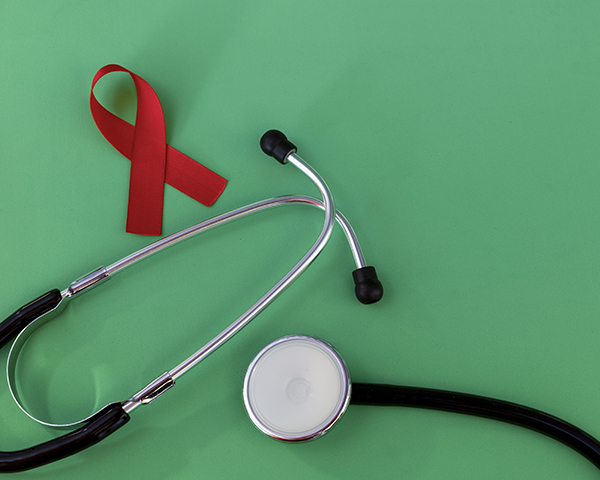
Leonidas Santana/iStock / Getty Images Plus
High Rates of Trauma in People with HIV
Violence is a major public health issue with profound effects on lifelong health, opportunity, and overall well-being. People of all backgrounds can encounter many different types of violence, including adverse childhood experiences, intimate partner violence (IPV), and community-based violence. Gaining a deeper understanding of how violence affects populations with specific health needs is essential to improving care and treatment strategies. In this NIH-funded study, published in 2024, researchers found frequent and common histories of interpersonal and community violence experiences among people with HIV.
What were the researchers studying and why?
More than 1.2 million people in the United States have HIV. Existing research suggests that many people with HIV experience various forms of violence. Prior studies have linked experiences of violence to poor HIV outcomes, including such direct effects as viral suppression and disengagement from care and such indirect effects as increased mental health and substance use disorders. This quantitative study aimed to address a critical knowledge gap by providing a more comprehensive and detailed view of lifetime experiences of violence in this population. Understanding the types of violence experienced by people with HIV could inform clinical care systems and decision-making by addressing those experiences in service delivery.
How did the researchers conduct this study?
Researchers conducted a cross-sectional survey of 285 people with HIV in the Atlanta, Georgia, area. At the time of the study, Georgia had the highest rate of new HIV infections in the United States, with more than half of those infections occurring in the Atlanta area. Participants were recruited from 19 HIV service delivery or research centers in the Atlanta area. They completed a one-time survey with an interviewer who collected their demographic information and assessed their exposure to various forms of violence, including adverse childhood events, interpersonal violence, non-partner violence, and hate crimes.
What did the study results show?
Participants were primarily male (69%). Across the sample, 42% identified as non-heterosexual. Of the 285 participants, 91% were Black or African American, 8% were White, and 7% reported Hispanic or Latinx ethnicity. These demographics are representative of those observed in the HIV epidemic in Georgia. The average time since HIV diagnosis was 16.4 years, and the average time engaged in treatment was 14.2 years. Although 83% had engaged in HIV care in the past 6 months, only 44% had been engaged in care regularly in the past 24 months.
The prevalence of previous experiences varied by type of violence. This study found that all participants had experienced at least one adverse childhood experience, including at least one type of neglect (emotional or physical). Additionally, 94% had experienced some type of abuse (emotional, physical, or sexual) and almost 90% had experienced lifetime IPV (89%).
Among participants who were in a partnership within the past year, 87% experienced IPV during that time. While experiences of IPV were similar between male and female participants, males had significantly higher rates of lifetime IPV that resulted in injury (39% vs. 21%, p = 0.0331). Nearly all participants (97%) reported experiencing non-partner violence, with significantly more males reporting experiences of crime than females (82% vs. 53%, p < 0.001). However, females reported a significantly higher prevalence of non-partner forced sex than males (50% vs. 34%, p = 0.0084). Additionally, 93% of participants reported experiencing a hate crime, with males reporting significantly higher rates of both lifetime (97% vs. 85%, p = 0.0003) and past-year (50% vs. 33.0%, p = 0.0086) hate crime experiences than females.
What is the potential impact of these findings?
This study expanded the existing literature on violence experienced by people with HIV, examining a diverse sample that included both sexes. The findings highlight both the widespread prevalence of violence and the significant sex-based differences in the types and effects of these experiences.
Understanding the pervasive nature of violence experienced this population is critical to improving HIV care and service delivery. These improvements include enhanced provider training, integration of mental health and counseling services within and beyond clinical settings, routine screening for IPV and other types of violence for both men and women, in conjunction with robust referral and support systems. Strengthening access to nonmedical support services alongside HIV care may lead to improved health outcomes for people with HIV, particularly in high-burden areas across the United States.
Citation
Sales, J. M., Anderson, K. M., Livingston, M. D., Garbarino, S., Hadera, S., Rose, E. S., Carlson, M. S., and Kalokhe, A. S. (2024). Experiences of childhood, intimate partner, non-partner, and hate crime-related violence among a sample of people living with HIV in the epicenter of the U.S. HIV epidemic. Frontiers in public health 12, 1331855. https://doi.org/10.3389/fpubh.2024.1331855








